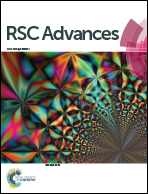Luminescence property tuning of Yb3+-Er3+ doped oxysulfide using multiple-band co-excitation
Abstract
Lanthanide ions have abundant excited-state channels which result in a radiation relaxation process generally accompanied by a non-radiation relaxation process. However, non-radiation relaxation processes will consume the activation energy and reduce the luminescence efficiency of the phosphor. Two lasers with an excitation energy which matched the ground state absorption and excited state absorption of ions were used to excite the phosphors to avoid the non-radiation relaxation process. This approach can achieve the purpose of populating specific states of the lanthanide ions, and furthermore effectively tunes the luminescence intensity and color output of the sample. Results show that the red emission intensity of the sample is significantly improved and this is caused by populating the 4F9/2 level under simultaneous 1510 nm and 980 nm excitation. Then when the 1510 nm and 808 nm co-operate to excite the sample, the green emission obtained increased sharply because the 2H11/2/4S3/2 states were efficiently populated. As a proof-of-concept experiment, this new approach has potential in the applications of solar cells.



 Please wait while we load your content...
Please wait while we load your content...